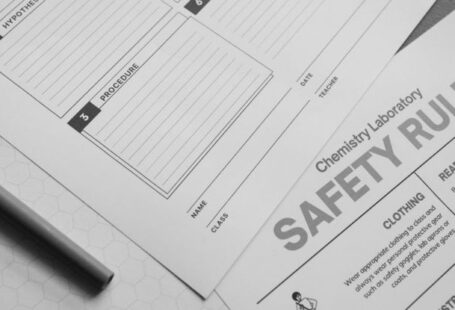Drone technology has seen significant advancements in recent years, with applications ranging from recreational use to commercial and military operations. One crucial component of a drone’s performance is its propellers, as they directly impact flight efficiency and maneuverability. Aerodynamic simulations have emerged as a powerful tool to enhance the design and performance of drone propellers. By leveraging computational fluid dynamics (CFD) techniques, engineers can simulate how air flows around propeller blades, leading to optimized designs that can improve efficiency, reduce noise, and enhance stability in various flight conditions.
**The Role of Aerodynamics in Drone Propeller Design**
Aerodynamics plays a vital role in the design and performance of drone propellers. The efficiency of a propeller is determined by its ability to generate lift and thrust while minimizing drag. Traditional propeller design methods rely heavily on empirical testing and iterative prototyping, which can be time-consuming and costly. Aerodynamic simulations offer a more efficient and cost-effective alternative by providing engineers with a virtual testing environment to analyze different design parameters and optimize performance before physical testing.
**Benefits of Aerodynamic Simulations for Drone Propellers**
1. **Optimized Performance:** Aerodynamic simulations enable engineers to evaluate multiple design configurations quickly and accurately. By studying the airflow patterns and forces acting on propeller blades, designers can identify areas for improvement and refine the shape, twist, and pitch of the blades to maximize efficiency and thrust generation.
2. **Reduced Noise:** Noise pollution is a significant concern in drone operations, especially in urban and residential areas. Aerodynamic simulations can help in designing propellers that minimize noise levels by optimizing blade geometry and reducing turbulent airflow. By mitigating noise emissions, drones can operate more discreetly and with reduced disturbance to the surrounding environment.
3. **Enhanced Stability:** The aerodynamic performance of propellers directly influences a drone’s stability and control during flight. Through simulations, engineers can assess how changes in propeller design affect factors such as lift distribution, drag, and yaw moments. By fine-tuning these parameters, drones can achieve greater stability, responsiveness, and maneuverability, especially in challenging weather conditions or complex flight scenarios.
**Challenges and Considerations in Aerodynamic Simulations**
While aerodynamic simulations offer numerous benefits for optimizing drone propellers, several challenges and considerations must be addressed to ensure accurate and reliable results. Factors such as turbulence modeling, boundary conditions, and computational resources can influence the fidelity and accuracy of simulation outcomes. Engineers must carefully validate simulation results against empirical data to verify the accuracy of the models and ensure that the optimized propeller designs translate into real-world performance improvements.
**Future Directions in Aerodynamic Simulation Technology**
As drone technology continues to evolve, so too will the capabilities of aerodynamic simulations in propeller design. Advancements in computational power, simulation algorithms, and modeling techniques will enable engineers to conduct more complex and detailed analyses of propeller performance. Machine learning and artificial intelligence algorithms may also play a significant role in optimizing propeller designs by autonomously exploring vast design spaces and identifying novel solutions that human designers might overlook.
**In Summary: Leveraging Aerodynamic Simulations for Enhanced Drone Propeller Performance**
Aerodynamic simulations have revolutionized the design and optimization of drone propellers, offering engineers a powerful tool to enhance performance, efficiency, and stability. By leveraging CFD techniques, designers can explore a wide range of design parameters, optimize propeller geometry, and achieve superior aerodynamic performance without the need for extensive physical testing. As drone technology continues to advance, the integration of aerodynamic simulations will play a crucial role in pushing the boundaries of performance and innovation in the field of unmanned aerial vehicles.





